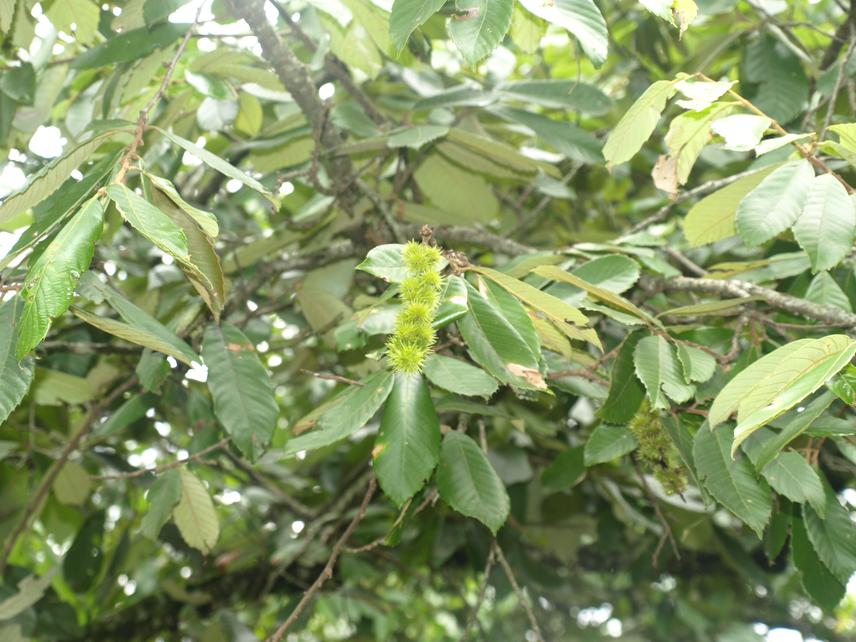Article featuring the project.
Journal of Ecology - Functional traits shape tree species distribution in the Himalayas
9 Jan 2017 Nepal, Indian Sub-continent Biodiversity | Plants
This research will use one of the longest and steepest altitudinal gradients in the world, i.e. the Himalayan altitudinal gradient in Nepal, to map current and future distributions of plant species in response to climate change in order to develop better understanding of climatic effects on plant species distribution and diversity.

Castanopsis indica (Roxb. ex Lindl.) A.DC., one of the selected species, observed at Banpale forest, Institute of Forestry, Pokhara, Kaski, Nepal.
Nepal is a global hotspot of biodiversity; it houses disproportionately higher percentages of the world's flora and fauna. This biodiversity is a result of altitude-driven variations in environmental conditions and habitats in the Himalayas. Climate change is threatening this biodiversity, as it is forcing species to shift upward and poleward. Such species range shifts will particularly be problematic in Nepal. In this mountainous country, moving upwards will be problematic as disproportionately small areas are available at high altitudes and moving northwards will be difficult as they are blocked by the steep mountain ranges. In this background, this research will use one of the longest and steepest altitudinal gradients in the world, i.e. the Himalayan altitudinal gradient in Nepal, to map current and future distributions of plant species in response to climate change in order to develop better understanding of climatic effects on plant species distribution and diversity. Such plant species distribution maps and understanding will be crucial for formulating effective strategy (ies) for in situ conservation and sustainable management of biodiversity under climate change. This will be vital not only for the local indigenous communities of the Himalayas and other montane regions around the globe because they rely heavily on forest and plant resources for their everyday livelihoods, but also for the entire global society because of the iconic value of the Himalayas and its biodiversity for the world.
This research will focus on plant species because they cannot migrate as easily as insects and animals and are therefore likely to be more threatened by the climate change-induced species range shifts. Further, the changes in plants species composition will have large cascading effects on wildlife and insects, i.e. faunal biodiversity, that are dependent on plant species for their habitat and food.
For this research, a suite of 220 plant species will be selected and their current and future distributions will be modelled and mapped using a Maximum Entropy model. For this, the required species occurrence data will be compiled from herbaria and field; and freely available global environmental data will be used as sources of environmental data/variables considered critical for plant functioning and survival.
Article featuring the project.
Journal of Ecology - Functional traits shape tree species distribution in the Himalayas